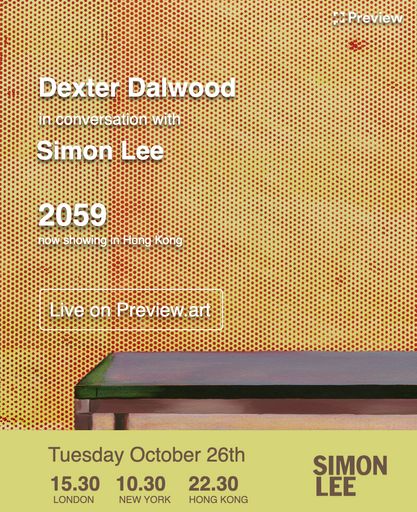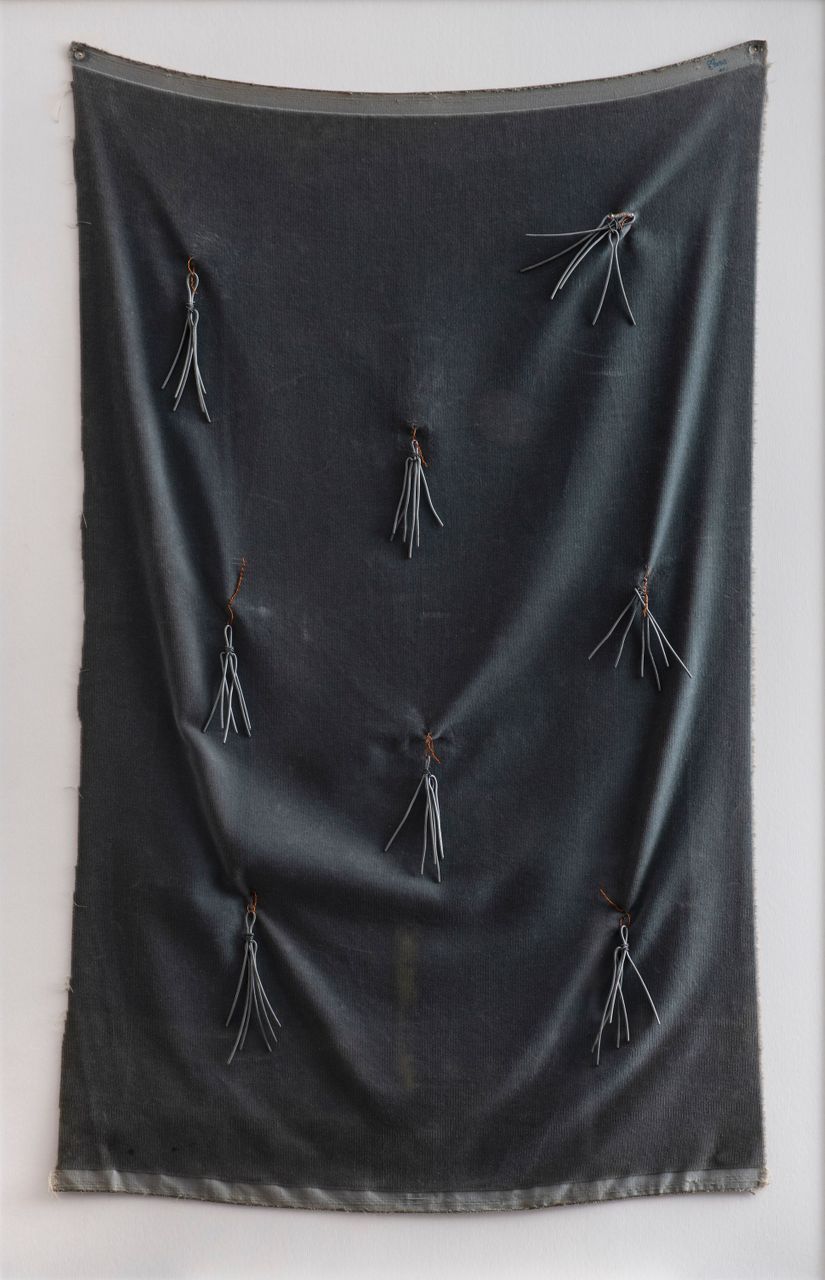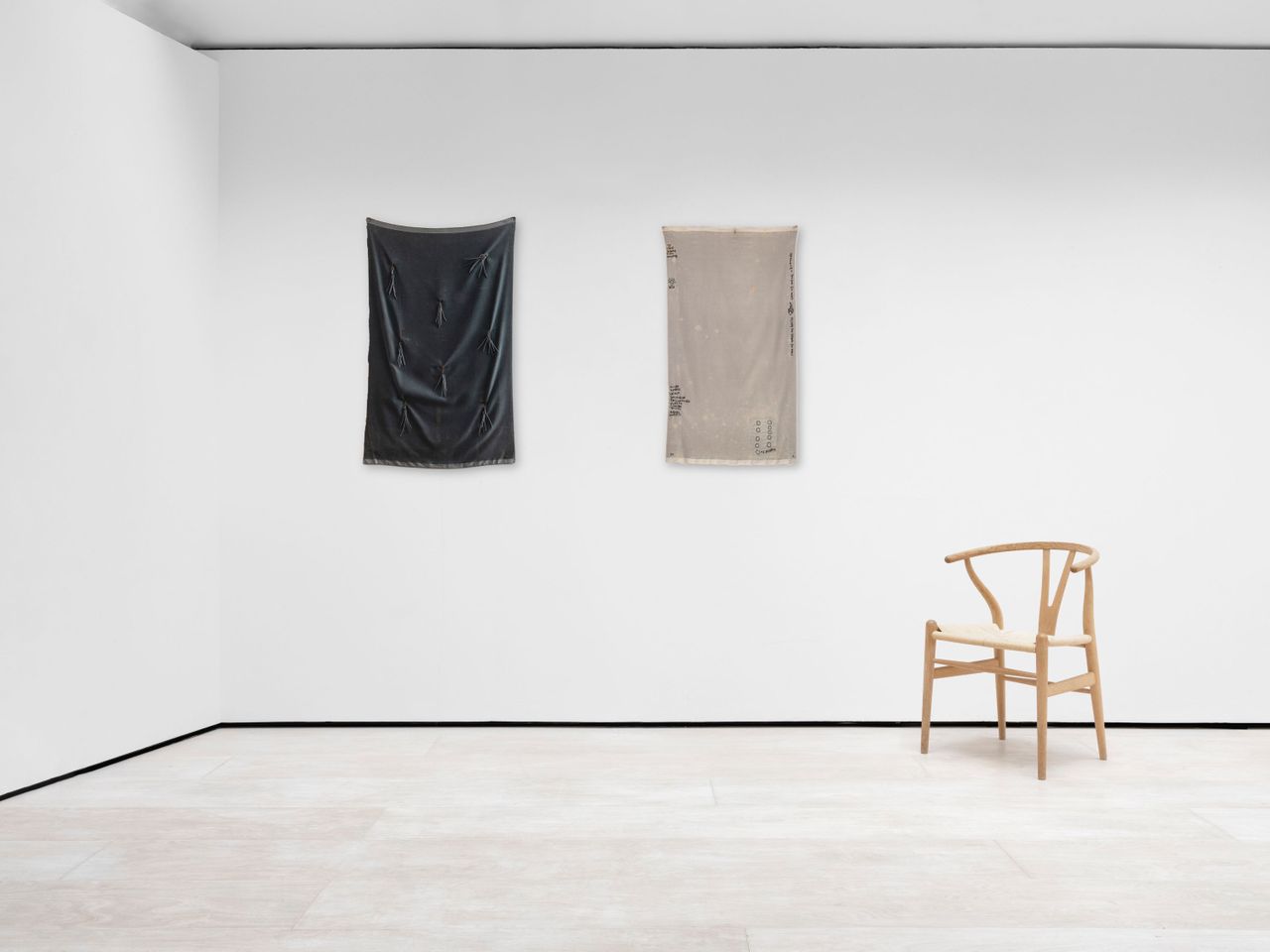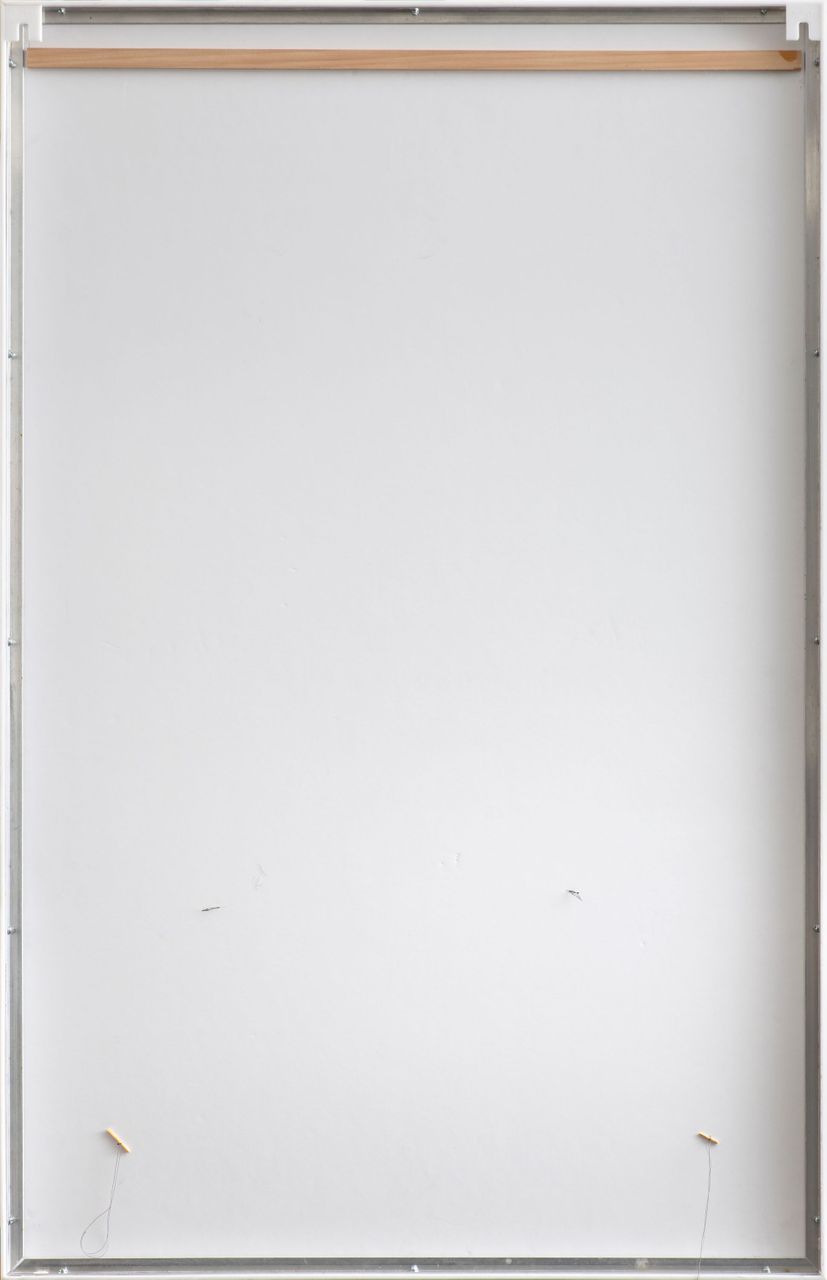-:-- / -:--
-:--
José Leonilson, 1957-1993
Rifat, 1988
Iron and copper wire on velvet
93.0 x 58.0 x 3.0 cm (36.6 x 22.8 x 1.2 in)
Gallery: Almeida e Dale
more
José Leonilson’s interest in textiles began at an early age, his father owned a textile warehouse and his grandmother, mother and sister all embroidered at home. He was deeply interested in the process of hand-embroidery, often writing text with thread as well as attaching objects to fabrics. The title of this work may be a reference to Rifat Ozbek, who won British Designer of the Year in the year in which this work was made, 1988. Ozbek’s fashion lines involved bright colours and tassels and encouraged a questionable brand of ‘ethnic chic’, borrowing styles from diverse cultural influences. It is possible that Leonilson is commenting on, or critiquing, Ozbek’s work by creating a work that forms the polar opposite – the fabric is black, the tassels are metal. Leonilson consumed a wide variety of visual information, from fashion to religious symbols, in order to create his own visual language. His interest in fashion is attested in his fanzine, Ideal Vogue (1976), which appears to critique the gaze of the fashion world.
... read more
José Leonilson’s interest in textiles began at an early age, his father owned a textile warehouse and his grandmother, mother and sister all embroidered at home. He was deeply interested in the process of hand-embroidery, often writing text with thread as well as attaching objects to fabrics. The title of this work may be a reference to Rifat Ozbek, who won British Designer of the Year in the year in which this work was made, 1988. Ozbek’s fashion lines involved bright colours and tassels and encouraged a questionable brand of ‘ethnic chic’, borrowing styles from diverse cultural influences. It is possible that Leonilson is commenting on, or critiquing, Ozbek’s work by creating a work that forms the polar opposite – the fabric is black, the tassels are metal. Leonilson consumed a wide variety of visual information, from fashion to religious symbols, in order to create his own visual language. His interest in fashion is attested in his fanzine, Ideal Vogue (1976), which appears to critique the gaze of the fashion world.
... read more












